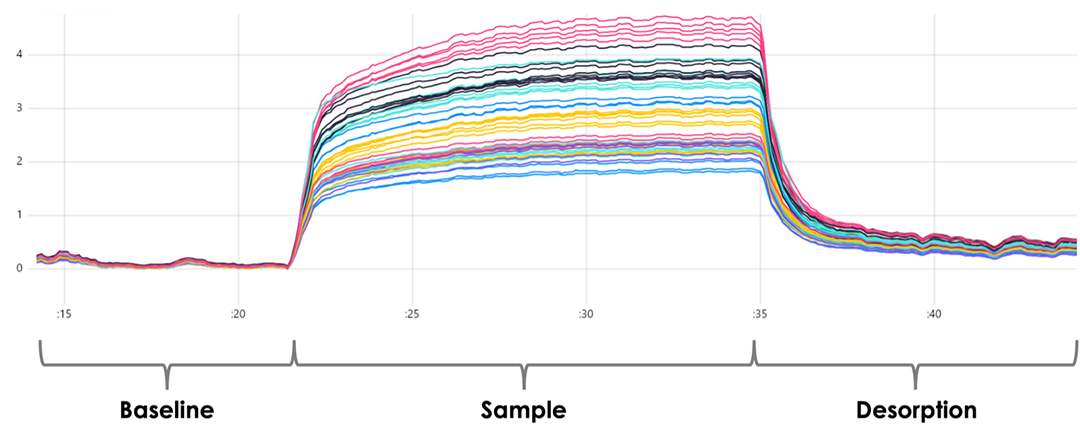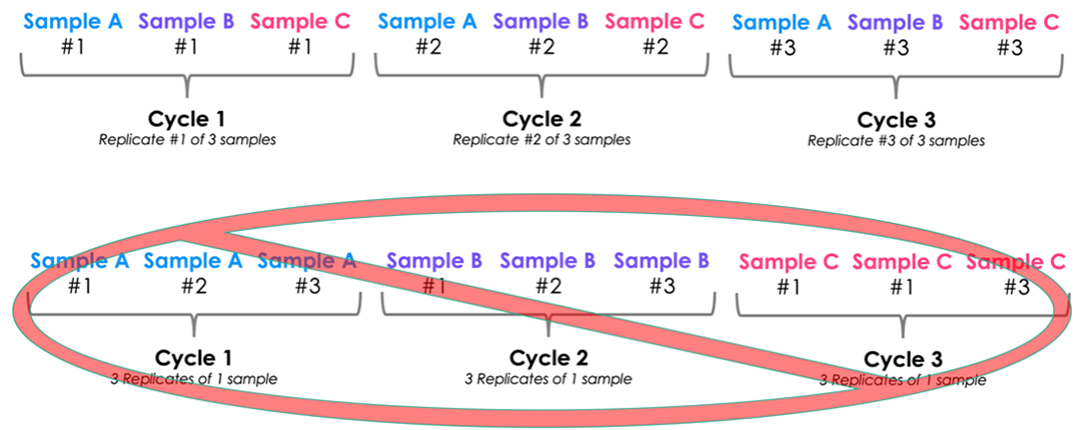In digital olfaction solutions, a critical first step is the learning phase where you train the product to your use case by capturing the odors of interest. It’s important that these odors are captured and annotated with the end use case in mind—the database can only recall what it has learned.
Although the biosensors respond instantaneously to VOCs, it’s important to understand that sensor response and times used to build experiment plans are very different. This blog post outlines the distinction between two main time parameters used to design experiment protocols—the measurement time and the time between measurements.
Measurement time
The measurement time is not just the active absorption of the VOC of interest, but rather the full measurement which includes the baseline, sample and desorption.

Capturing the baseline prior to the sample measurement ensures that we have the capture of what is considered ‘clean’ air. And depending on the sample VOC, desorption can vary due to the stickiness of the molecules. Accounting for these two phases—before and after the sample is presented—in the calculation of your required measurement time ensures the overall quality of the odor signatures being captured.
Time between measurement
The time between measurements should be viewed as separate from the measurement time as it relates to the user application and the headspace concentration of the samples being measured. It’s important to allow enough time between measuring samples for a headspace to develop that is equal to the previous measurements. To do this, users should take measurements as a cycle of multiple samples versus recording replicates of each sample in series.

Using an automated sampler system can help this by alternating which samples are being detected at regular intervals to allow the headspace to replenish between measurements. The Aryballe Suite has standard protocols out-of-the-box that operate in this specific way.
Although measurement time and time between measurement may sound synonymous, they are actually two different application parameters. Aryballe’s Field Applications Engineering team is available to assist customers in developing the optimal protocols for their use cases as part of our rapid feasibility programs. Contact us today to learn more.

